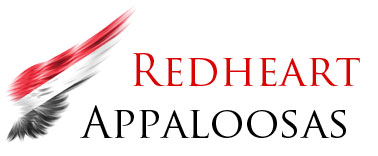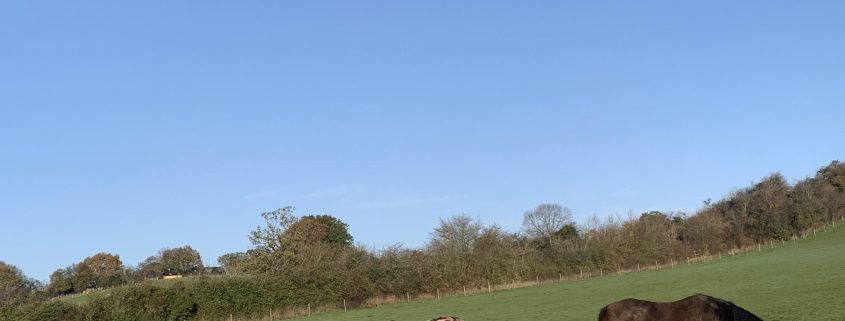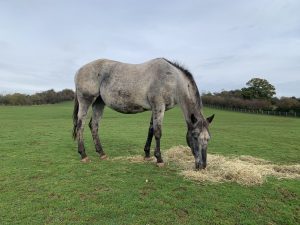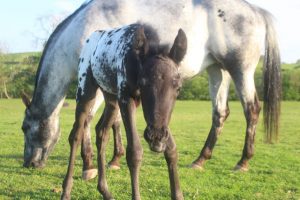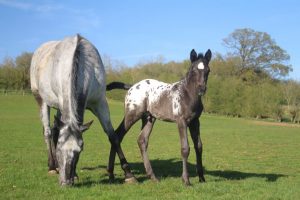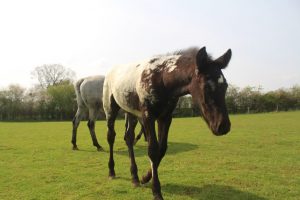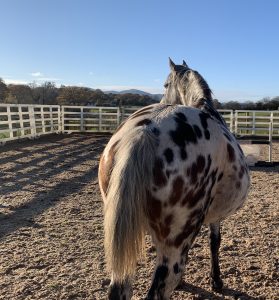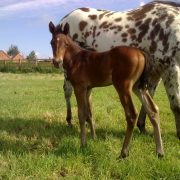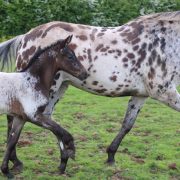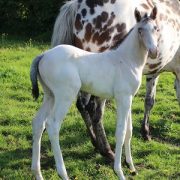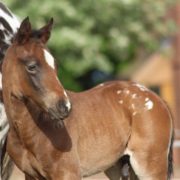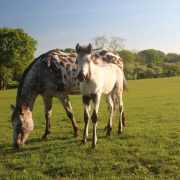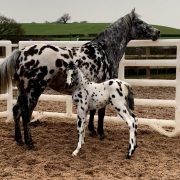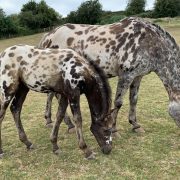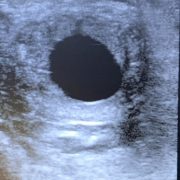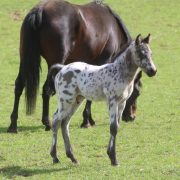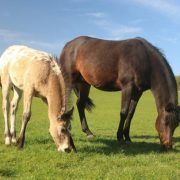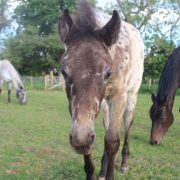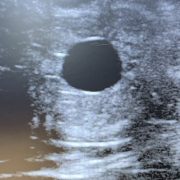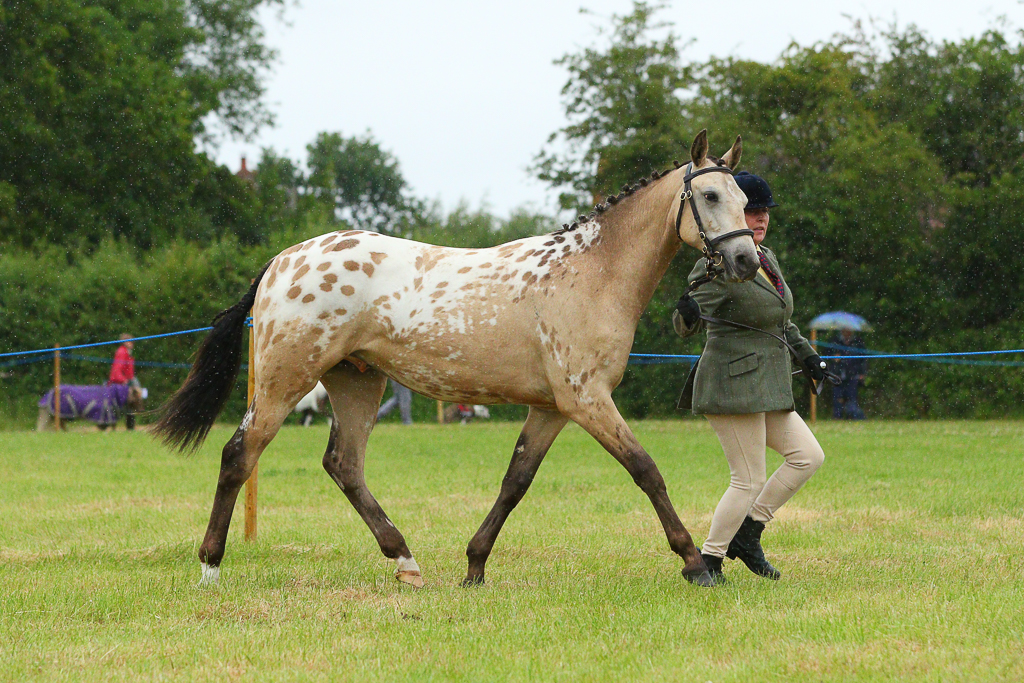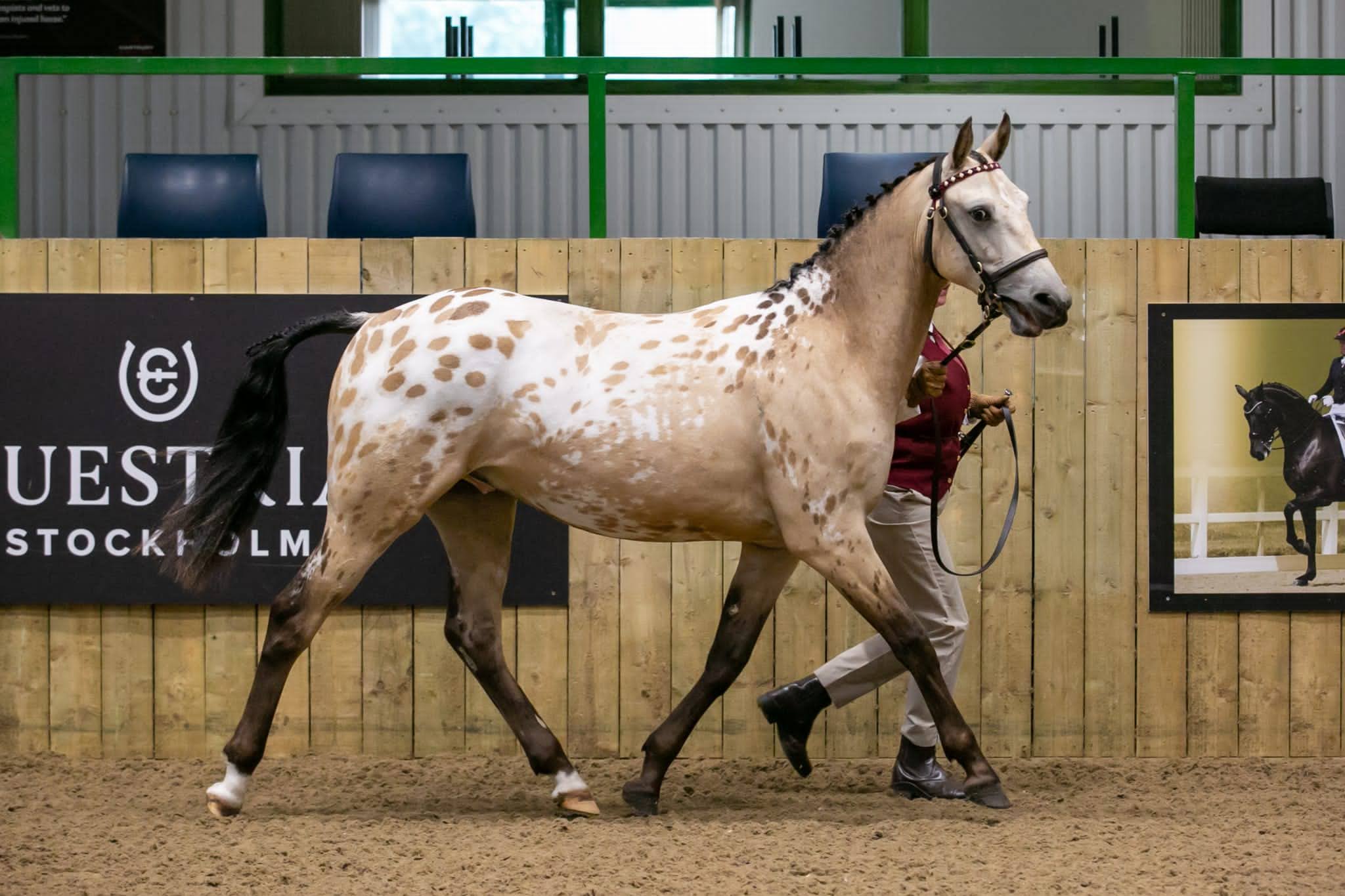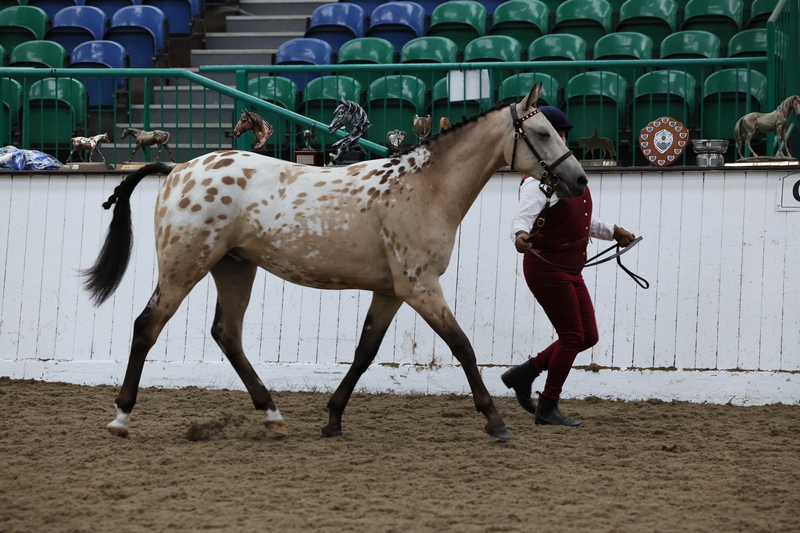The Redheart Mares are carrying the 2023 Redheart Foals.
Our four broodmares are in for the winter…
Talisman’s Redheart (Ghost) is confirmed in foal to Hevan’s EV Catorrius (Reus).
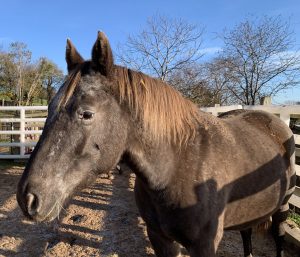 We store our stallion’s semen mainly as a backup, we are very realistic knowing anything can happen to horses within a blink of an eye.
We store our stallion’s semen mainly as a backup, we are very realistic knowing anything can happen to horses within a blink of an eye.
It is an expensive way to breed and not always successful but using Hevans EV Catorrius frozen semen with Ghost will hopefully give us our Reus filly, one day!
Admitted to Three Counties Equine Hospital this year with her 2022 foal at foot she was as inseminated under the expert eye of Vicky Savage – BVSc MSc CertAVP DipECEIM MRCVS European Specialist in Equine Internal Medicine.
Ghosts first pregnancy scan was positive but showed a double ovulation had occurred, meaning she had twins, one embryo at 16mm and the other at 19mm. It’s not rare for a mare to double ovulated (we wouldn’t intentionally risk any mare to carry twins) but what is rare is she caught again 3 days after insemination. Frozen semen usually will only remain viable inside the mare for 6-12 (or perhaps even 18) hours.
Vicky “pinched” the smaller embryo and Ghost was re-scanned to ensure the embryo was still there, implanted into the uterus and developing, 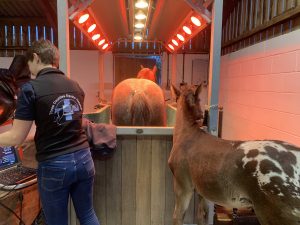 at 34 days another scan ensured a heartbeat was seen.
at 34 days another scan ensured a heartbeat was seen. 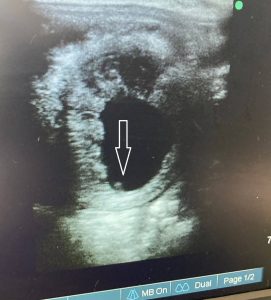
We are delighted Ghost has been confirmed with a healthy single pregnancy and carries the full sibling to Really.
We REALLY can’t wait to meet this foal!
Redheart Pascallius (Evee) crossed with DFR Patahas Redheart (Blu) can only produce black or smoky black foals, she is confirmed in foal for 2023.
We are very much looking forward to meeting the UK’s next GAP 6 foal.
Redheart Ricochet
Redheart Remembrance
Evee x Blu 2023 (Heartbeat Scan)
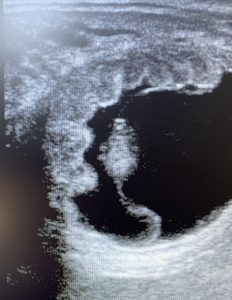
Peyres Catori Cat (Catori) is confirmed in foal to DFR Patahas Redheart for 2023.
Breeding Appaloosa’s is like choose a Random Revel, you just don’t know what you are going to get (although I can confidently say I can pick out the chocolate buttons and Malteser’s but struggle with the orange cream, coffee cream, caramel and chocolate raisins).
This mare exceeds our expectations every delivery by what she produces, she is our least Foundation mare but her “get” will produce Foundation Appaloosa’s registered with FAHR if crossed to the right FAHR mare/stallion.
One of the most charismatic equines I have ever had the pleasure of owning.
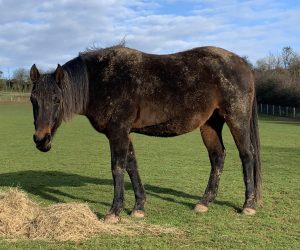 Caricks Redheart (Myka) is confirmed in foal to DRF Patahas Redheart (Blu) for 2023.
Caricks Redheart (Myka) is confirmed in foal to DRF Patahas Redheart (Blu) for 2023.
The Appaloosa is a Breed not a colour and the non-Characteristic (lp/lp) horses like our Caricks Redheart is an absolute blessing for producing 100% characteristic Appaloosa foals (LP/lp) when mated with our homozygous (LP/LP) stallion Blu.
Here is Myka with her three foals by Blu, she can only produce spotted bay or buckskin foals.
We look forward to the safe arrival of her fourth full sibling in 2023.
Redheart River Run
Redheart Romance
2023 Myka x Blu
Everything crossed for the foal’s safe arrival – The Class of 2023.
